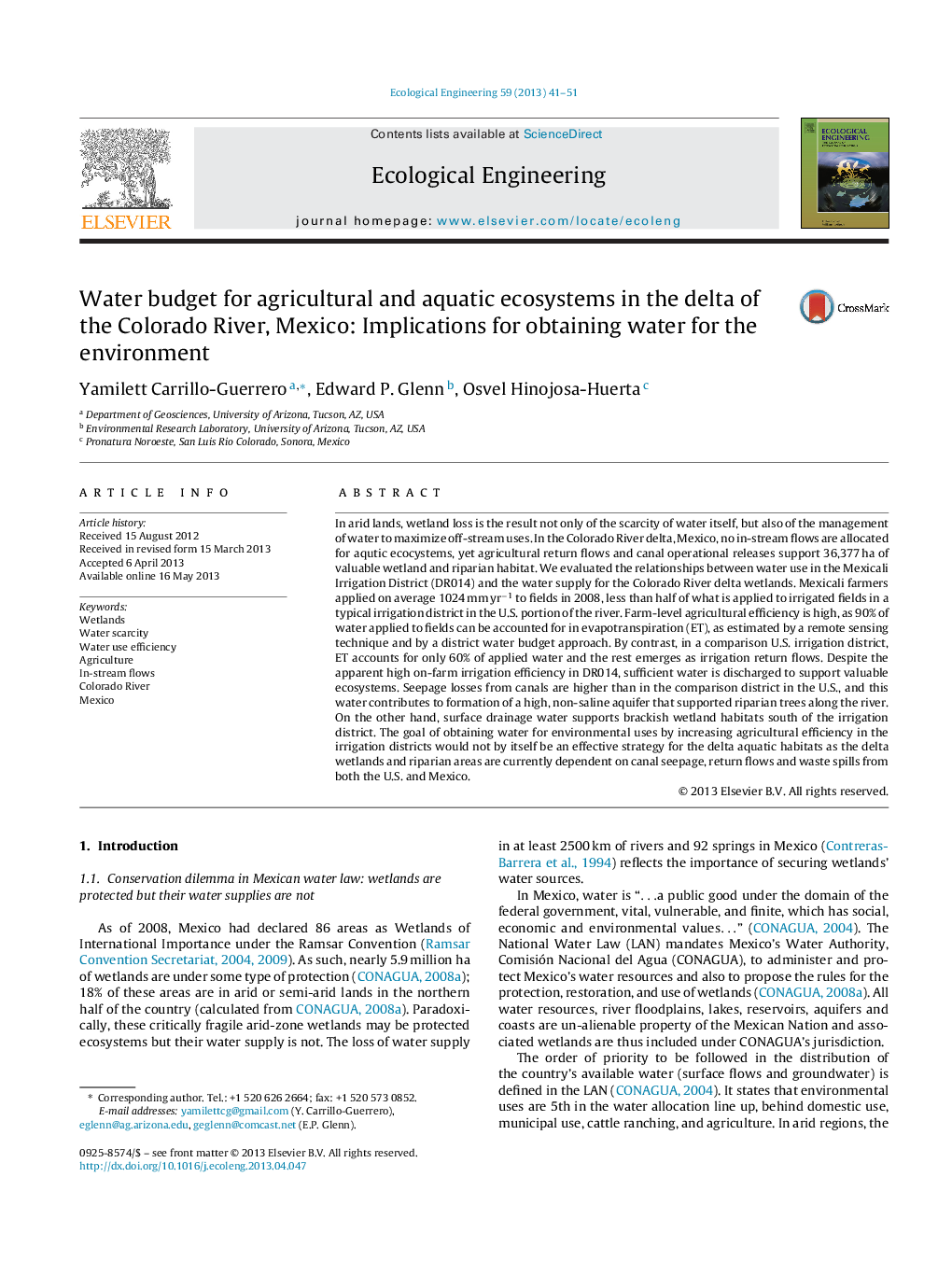| Article ID | Journal | Published Year | Pages | File Type |
|---|---|---|---|---|
| 4389710 | Ecological Engineering | 2013 | 11 Pages |
Abstract
In arid lands, wetland loss is the result not only of the scarcity of water itself, but also of the management of water to maximize off-stream uses. In the Colorado River delta, Mexico, no in-stream flows are allocated for aqutic ecocystems, yet agricultural return flows and canal operational releases support 36,377 ha of valuable wetland and riparian habitat. We evaluated the relationships between water use in the Mexicali Irrigation District (DR014) and the water supply for the Colorado River delta wetlands. Mexicali farmers applied on average 1024 mm yrâ1 to fields in 2008, less than half of what is applied to irrigated fields in a typical irrigation district in the U.S. portion of the river. Farm-level agricultural efficiency is high, as 90% of water applied to fields can be accounted for in evapotranspiration (ET), as estimated by a remote sensing technique and by a district water budget approach. By contrast, in a comparison U.S. irrigation district, ET accounts for only 60% of applied water and the rest emerges as irrigation return flows. Despite the apparent high on-farm irrigation efficiency in DR014, sufficient water is discharged to support valuable ecosystems. Seepage losses from canals are higher than in the comparison district in the U.S., and this water contributes to formation of a high, non-saline aquifer that supported riparian trees along the river. On the other hand, surface drainage water supports brackish wetland habitats south of the irrigation district. The goal of obtaining water for environmental uses by increasing agricultural efficiency in the irrigation districts would not by itself be an effective strategy for the delta aquatic habitats as the delta wetlands and riparian areas are currently dependent on canal seepage, return flows and waste spills from both the U.S. and Mexico.
Related Topics
Life Sciences
Agricultural and Biological Sciences
Ecology, Evolution, Behavior and Systematics
Authors
Yamilett Carrillo-Guerrero, Edward P. Glenn, Osvel Hinojosa-Huerta,
